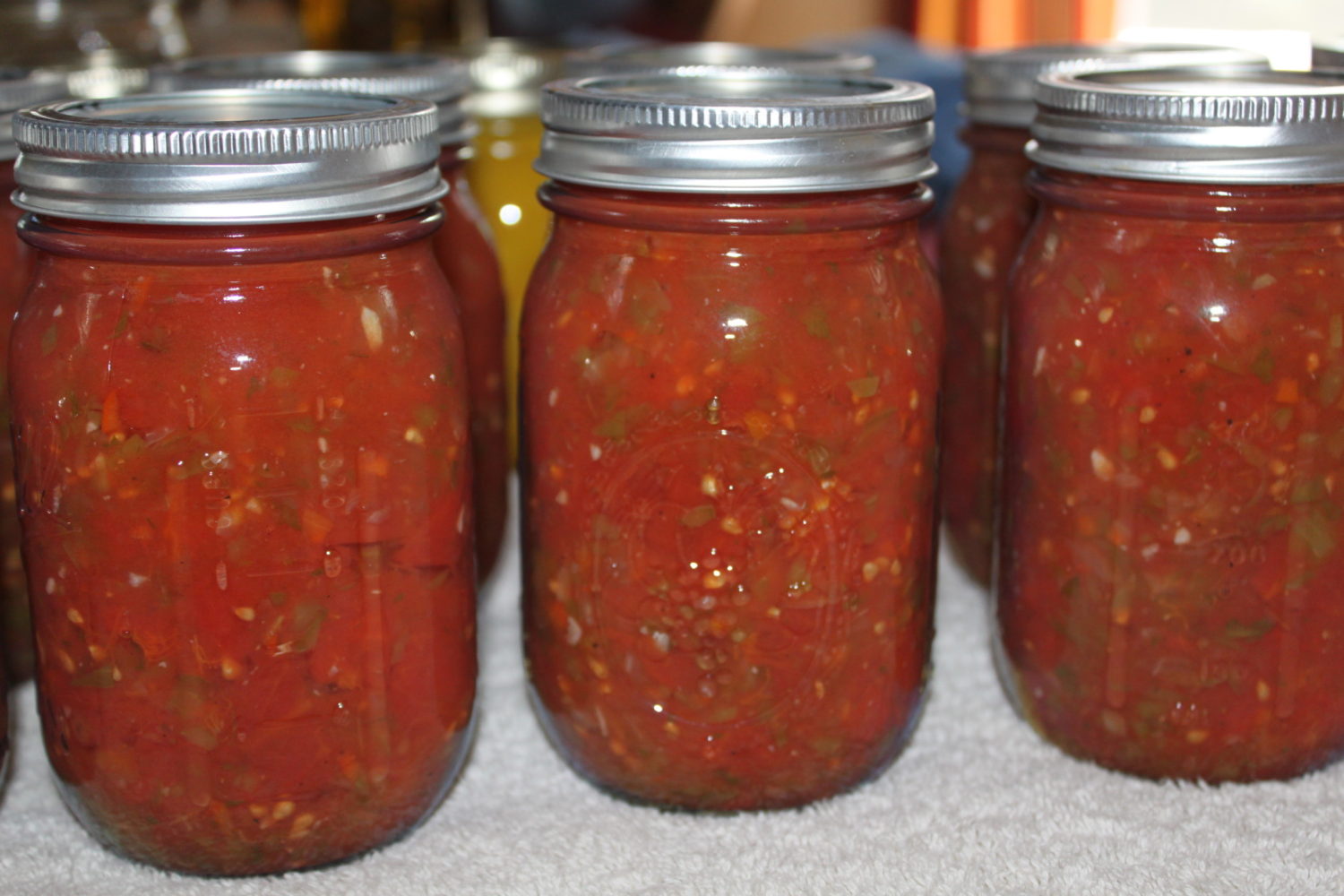Having salsa in your pantry at all times can be a huge lifesaver when it comes to mealtimes. You know there’s nothing like a fresh batch of salsa and today, I’m sharing how to can salsa the easy way so you can keep it year-round.
In the post, I’m going to answer all of your salsa canning questions, so keep reading.
This recipe originated from my friends at Ball® Home Canning, my go-to resource on all things preserving. Why not go straight to the pros to give you this step-by-step guide?
I’ve also linked everything I used in this post; which is great because Ball canning products are easy to find online and in major retailers.
If you’ve found yourself with more tomatoes in your garden you can consume and already figured out you can’t freeze tomatoes, you’re in the right post. Preserving them in salsa is the way to go!
This post will explain everything you need to know to keep your garden tomatoes for months to come; from how to make the tomato peeling process 1000x easier to how to store your precious canned salsa and more.
You know why I love having canned salsa in my pantry? Because I can always have it on hand for all the taco recipes on this website and for chips, of course!
Enter your email, and I’ll send this one straight to your inbox. Plus, you’ll receive epic new recipes to try every single week. We won’t send you spam. Unsubscribe at any time.
Today, I’m going to show you how to can salsa at home with a simple and easy-to-follow canning process. You’ll need a few canning supplies to get the job done so let’s go over those first.
You must add acid to canned salsa because the natural acidity may not be high enough. Commonly used acids are vinegar and bottled lemon juice. Lemon juice is more acidic than vinegar and has less effect on flavor.

Best Jars for Canning
The best jars for canning are always made from glass and with lids that are BPA-free. The jar size is always a matter of preference, with smaller 8-ounce jars being traditionally used for jelly and 16-ounce and 32-ounce jars for canning salsa, sauces, and vegetables.
There are also two lid sizes, traditional, regular-mouth canning jars, and wide-mouth jars. And while each is best for different foods, it always boils down to a matter of preference and what will make the canning process easier.
The ones I used in this post are made by Ball, which has been making the most popular jars for canning since 1880.
There are two approaches to safe canning: water bath and pressure canning. For this recipe, I’m using the water bath; it’s the simplest and beginner-friendly method.
Water bath canning is best for high-acid foods and recipes that include the right amount of acid. The combination of time and temperature destroys bacteria while the heat creates a vacuum seal.
Items such as fruit, jams, jellies, salsa, tomatoes, pickles, sauces, pie fillings, and condiments use this method.

This form of canning uses high temperatures to safely preserve foods that are low in acid such as meat, poultry, vegetables, chili, and seafood.
Once again, the combination of time and temperature destroys bacteria and creates a tight vacuum seal, so food stays fresh longer.
Do You Need to Cook Salsa Before Canning?
Yes, cooking salsa is a necessary step before canning to cook out any bacteria left in the food, which would only multiply when sealing and storing for long periods of time.
To can or preserve food for long-term storage you can store the food in a jar filled with an acidic liquid (like pickles or olives) or cooked, such as jams, sauces, and salsas.
When you open your previously canned salsa months from now, it will not taste like tomato sauce, it will taste like a better version of salsas you find in your grocery shelf not in the fresh/refrigerated aisle.
CANNING FRESH HOMEMADE SALSA / STEP BY STEP INSTRUCTIONS WITH RECIPE / POSITIVELY AMY
FAQ
What if I forgot to put vinegar in my salsa?
Should vinegar be added to salsa?
Can you use lime juice instead of vinegar when canning salsa?
How much vinegar do you put in canned tomatoes?
Does Canning salsa taste vinegary?
To balance the taste of the vinegar in the canning salsa, we add some sugar to the mix. This combination intensifies the flavor of the salsa and also helps the salsa from tasting too vinegary. Have a Surplus of Tomatoes?
Will I still get the benefits of vinegar water if I add sweetener?
Benefits will be achieved. Vinegar has a moderating effect on blood glucose levels – about 15 ml a day should be taken in a way that is easy to incorporate into your regular diet.
Why do Chiles need more vinegar in Canning salsa?
But the chiles are not acidic, so they need more vinegar. To balance the taste of the vinegar in the canning salsa, we add some sugar to the mix. This combination intensifies the flavor of the salsa and also helps the salsa from tasting too vinegary.
Can you use vinegar if you don’t can salsa?
If you do not use vinegar in your recipe for canning salsa, you must replace it with bottled (not fresh) lemon or lime juice. Because yes, the acid helps in the flavor, but more importantly, it creates a safe salsa to can. If there is not enough acidification in the salsa, it may lead to bacterial spores that cause botulism to germinate and grow.
